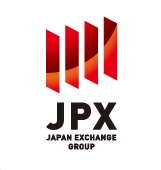A Close Look at the Japanese Exchange Group
The private holding corporation that is known as the Japanese Exchange Group (JPX) facilitates the trade of financial securities within Japan. Formed from the merger of the Tokyo Stock Exchange (TSE) and the Osaka Securities Exchange (OSE) in 2013, The Financial Instruments and Exchange Act in 2008 gave authorisation for the Japanese Exchange Group to provide an exchange-based infrastructure to enable the trading of debt instruments, derivatives and futures. From its base in Tokyo, it is one of the top world exchanges, with a market capitalisation of around US$4.48 trillion. The JPX is Asia’s leading financial exchange, and it is third largest in the world, following NYSE Euronext and the NASDAQ OMX Group. There are three major subsidiaries of the JPX, each handling a separate function of the market. These are the Osaka Exchange, the Japan Exchange Regulation, and the Tokyo Stock Exchange. The Tokyo Stock Exchange and the Osaka Exchange have a commission to provide access to the market for investors and traders under the JPX’s direction, and the Japan Exchange Regulation is a self-regulatory body. As well as supplying market data and market infrastructure, the Japanese Exchange Group also offers settlement and clearing services through their central counterparty, as well as conducting trading oversight in order to maintain market integrity.
| Broker | Bonus | More |
|---|
The Subsidiaries That Make Up the Japanese Exchange Group

The derivatives market in Japan is operated by the OSE (Osaka Exchange). The offerings available on the OSE include a range of domestic and foreign equities indices, volatility indices and interest rate products. The products most frequently traded on the Osaka Stock Exchange are the TOPIX (Tokyo Stock Price Index), Nikkei 225 Options and Nikkei 225 Mini. The Osaka Exchange is a solely digital marketplace. which allows traders and investors to participate in trading in the Japanese derivatives market online. The technology used to do this is cutting-edge, and has been adopted from NASDAQ to power the OSE J-Gate trading platform. This platform has instant connectivity, better market access, and low market latency.
The JPX-R (Japan Exchange Regulation) is a body that is commissioned to regulate the securities markets. It is part of the Japan Exchange Group, and acts as an independent body of self-regulation with a mission to uphold marketplace integrity while overseeing the operations taking place on both the Tokyo Stock Exchange and the Osaka Exchange.
A Short Guide to the History of the Japanese Exchange Group (JPX)
There has been organised trading in financial securities in Japan from as early as the first part of the 18th century when the Dojima Rice Market was established. With its base in Osaka, this is the market that is most commonly recognised as the first modern-style futures exchange and the place where organised futures trading was born. The entire basis for all modern futures accounting methods as well as the famous Japanese Candlestick techniques for charting were first conceived and pioneered at Dojima. The market operated for around 200 years before being dissolved in 1939. In 1878, the Stock Exchange Ordinance was enacted and this laid the foundations for establishing the Tokyo Stock Exchange and the Osaka Securities Exchange. These both handled the trade of derivatives, debt instruments and equities until the period between 1945 and 1949 when they were closed due to the Second World War. The Securities and Exchange Law was adopted by the Japanese Government in 1949 – a piece of legislation which had its basis on the legal framework set out by the United States Securities and Exchange Act. This led to the Japanese markets being regulated directly by the Securities and Exchange Law, with markets being opened in Nagoya, Tokyo and Osaka. The period following the Second World War led to a sustained period of economic prosperity for the Japanese people. The thriving manufacturing sector as well as robust economic growth and a huge amount of international capital investment kept the Japanese economy flourishing for years. In fact, this era of prosperity endured until the first part of the 1990s and this period is sometimes known as the nation’s “Economic Miracle”. The Japanese equities market during this era was at the top of its game with regard to market capitalisation, and during the years 1985 to 1989 the Nikkei (the major Japanese equity index) went through a time of huge growth, tripling in value over that period and representing a third of the entire global market capitalisation.
When the 1980s asset bubble burst, inflation and a slow down in economic growth took place. The Japanese market place at the turn of the Millennium saw a period of government intervention, with monetary policies centring on quantitative easing being adopted to try to boost growth. As the fallout of the global credit crisis from 2008 to 2010 hit, the Osaka Exchange and Tokyo Stock Exchange merged to become one body as a result of the stagnating Japanese economy. The country was also falling behind its neighbour, China, with regard to equity market capitalisation. When the merger was completed in 2013, the Tokyo Stock Exchange and Osaka Exchange had achieved official unification and thus the Japanese Exchange Group was created.
Other educational materials
Recommended further readings
- “Do Interest Rate and Stock Price have an Impact
on REIT Market in Japan☆”. Ito, Takayasu. The 2013 WEI International Academic Conference Proceedings Istanbul, Turkey, 89-98. - “Will high-frequency trading practices transform the financial markets in the Asia Pacific Region?.” Kauffman, Robert J., Yuzhou Hu, and Dan Ma. Financial Innovation 1, no. 1 (2015): 1-27.


